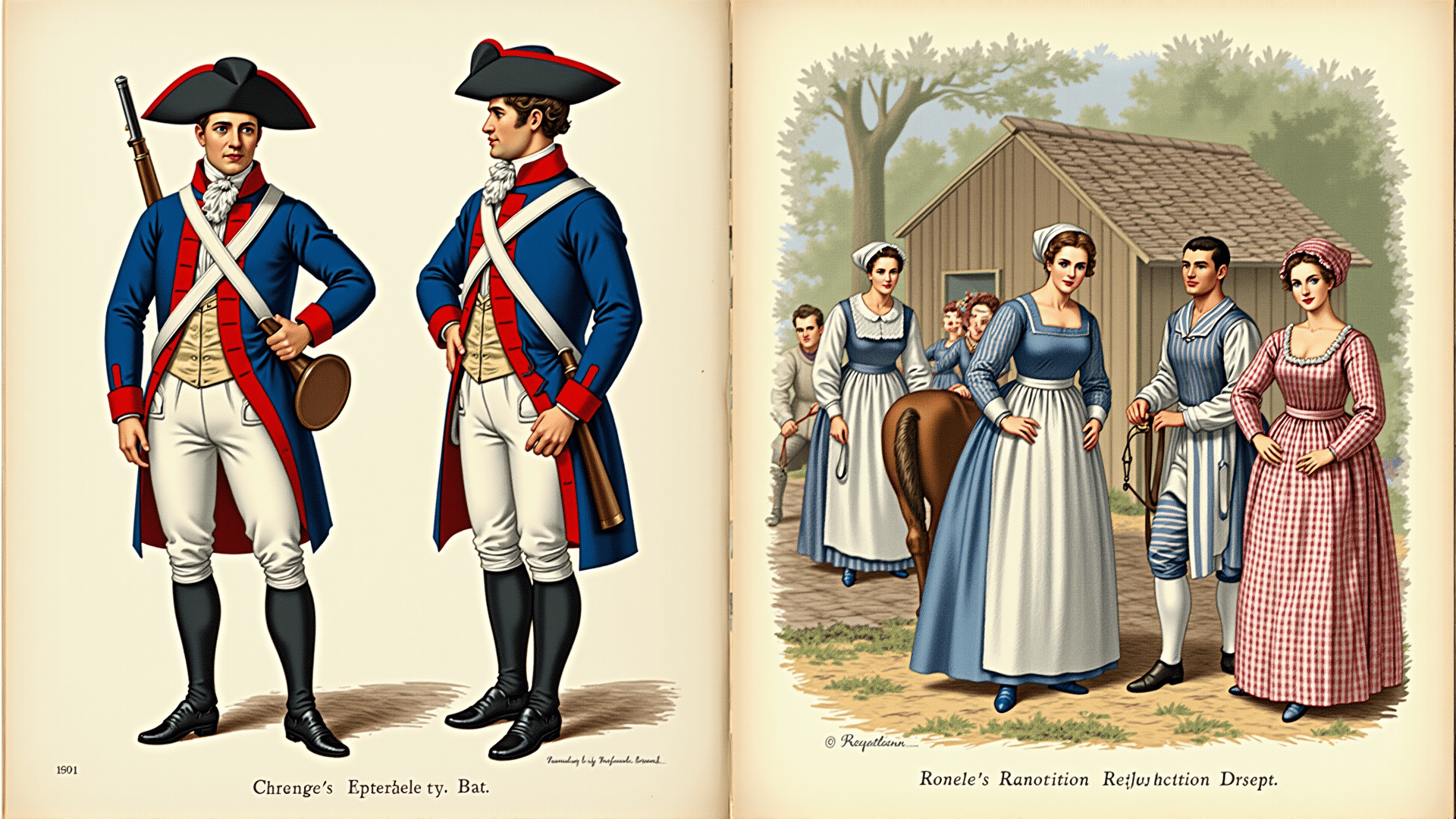During the American Revolution, fashion was not merely a reflection of personal taste but became a direct expression of political leanings and practicality. As the colonies struggled for independence, their inhabitants faced both scarcity and an evolving sense of identity that prompted significant changes in the way they dressed.
The shift from European opulence to practicality characterized much of the American approach. Prior to the revolution, colonial elites often mirrored the extravagant styles of European courts. However, as the drive for independence intensified, so did a corresponding push for simpler, more functional attire. The necessity of the times dictated a departure from imported fabrics and excess, favoring instead locally produced materials such as homespun cloth. This choice served as both a practical measure in response to supply disruptions and a statement of self-reliance.
Men's garments, traditionally ornate, began to transition toward more streamlined forms. Waistcoats and breeches made of durable cloth enabled easier movement and served as sensible attire for those enlisted in the militia. Additionally, the wearing of linen shirts, often accompanied by a simple wool or leather outer garment, reflected a growing practicality. Even hats, while maintaining a degree of style, took on simpler shapes with tri-corner designs offering both utility and a nod to military fashion.
Women's apparel also adapted to the reality of the era. While maintaining femininity, dresses became more pragmatic. Fuller skirts were held in favor due to their ease of movement and versatility, often serving dual purposes from daily chores to social gatherings. The scarcity of imported silks and fine cottons led women to adopt linen and woolen fabrics, emphasizing utilitarian pajamas and aprons. Roxane style caps, known for their pleats and moderate designs, topped these attire choices, balancing appearance with function.
Symbolism played a significant role during this period. The Patriot movement utilized fashion as a form of visual protest against British taxation and export restrictions. Wearing "homespun" became synonymous with resistance to British imports. The Daughters of Liberty, a political group of women, championed the creation and wearing of homespun, holding it up as a patriotic duty. The simplicity of their attire reflected a commitment to the cause and an allegiance to the new identity being forged by the fledgling nation.
Moreover, the adoption of certain fashion choices signified allegiance to the revolutionary cause. For example, buckles were often replaced by laces on shoes and clothing as an act of defiance against British manufacturing. Such modifications to attire served as non-verbal declarations of independence and fortitude.
This transformative period in American history revealed fashion as a versatile weapon against colonial rule and an instrument of personal expression aligned with a larger political movement. In its departure from excessive European styles, Revolutionary fashion laid the groundwork for a uniquely American identity, intertwining practical necessity with symbolic resistance.
